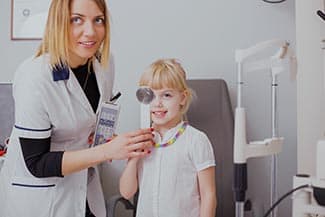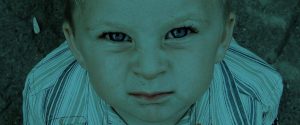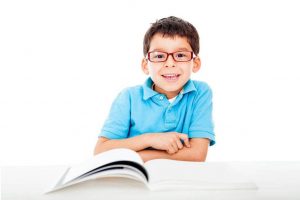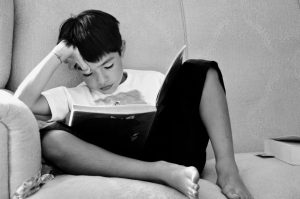The importance of pediatric eye exams
While it is common practice for pediatricians to conduct a brief vision screening at your child’s annual physical, it is important to emphasize that these screenings are not a substitute for a thorough examination performed by an eye doctor.
Eye doctors utilize specific clinical and diagnostic tools and assessments to determine your child’s ocular health and visual abilities. Since many learning skills are dependent on the strength of visual skills such as binocular vision, accurate eye movements, the ability to see distant objects, etc., doctors recommend that children have their first eye exam even before reaching school age.
Contact an eye doctor near you that are experienced in conducting eye exams for children.
Vision screenings vs. comprehensive eye exams
Many schools conduct vision screenings to identify any vision problems that may affect a child’s ability to learn.
Even if your child has passed a school vision screening, it is still strongly recommended to schedule a comprehensive eye exam. Vision screenings do not check for all the vision problems that can affect children.
When should my child have their first eye exam?
Eye doctors recommend that children have their first eye exam at six months of age to ensure that their eyes are developing normally.
After this initial visit, doctors recommend that you bring your child for a second eye exam every year or at least by age 2 or 3, and then again before they start school.
What to expect: Your child’s first eye exam
When meeting with your child’s eye doctor for the first time, be prepared to answer questions about your child’s birth history (including any complications during pregnancy or delivery), birth weight, and whether they were born full-term.
Your doctor will also ask questions regarding family history of ocular disease, and your child’s medical history— including previous eye problems, treatments or surgeries, current medications and any allergies they may have.
Be sure to tell your doctor about any delay in motor development, and if you have noticed:
- Frequent eye rubbing or blinking
- Difficulty maintaining eye contact
- Poor tracking skills
It is also important to mention if your child has failed a vision screening conducted by their school or pediatrician.
Eye testing for infants (6 months to 2 years)
Babies by six months of age are tested for eye focusing skills, color vision and depth perception. Your eye doctor will typically use three different tests to determine whether your baby’s eyes are developing normally.
- Pupil responses. This test will measure your baby’s pupil response (opening and closing) in the presence or absence of light.
- Fixate and follow. This test will measure your baby’s ability to fixate on and follow an object as it moves. The ability to fixate on an object usually develops within the first month of birth, while the ability to follow an object typically develops by three months of age.
- Preferential looking. This test will measure your baby’s vision, using special cards that are blank on one side and striped on the other, to attract the baby’s gaze.
Eye exams for preschool children (2 to 5 years)
At this age, children are learning to color, draw, cut paper, stack blocks, build with Lego pieces, play with balls, and more!
A comprehensive exam for preschool children usually includes a series of tests for:
- Visual acuity
- Lazy eye
- Stereopsis (3D vision)
- Eye tracking
- Convergence
- Color vision
- Ocular health
All of these visual skills are vitally important for the healthy development of an infant and to prepare them for the school years ahead.
Young children are constantly learning new skills that will prepare them for when they learn to read and write. Visual skills, such as, visual perceptual skills, eye-hand coordination, fine motor skills, etc., are also essential for learning and academic success.
If you notice that your child is showing any signs of developmental delay, or if your child has difficulty recognizing shapes, colors, numbers, or letters, inform your eye doctor— a developmental delay may signal a vision problem.
LEA symbols are used to test visual acuity for young children who are unable to identify the letters on an eye chart. These symbols include an apple, house, square, and circle. Your child will be asked to identify these symbols, allowing your eye doctor to measure how well your child sees both near and distant.
Random dot stereopsis measures your child’s 3D vision— this is an indication of how well your child’s eyes work together. This test uses a chart with special patterns of dots and 3-D glasses.
Assessment of visual skills to rule out the presence of:
-
- Amblyopia— also known as lazy eye
- Strabismus— also known as crossed-eyes
- Convergence insufficiency— the inability to view near objects easily
- Focusing difficulties
- Poor depth perception
Color vision is examined using pictures with specific colors to determine if your child can discriminate between colors— the most common assessment is called the Ishihara Test.
Retinoscopy is a technique used to obtain an objective measurement of a refractive error. The doctor uses a retinoscope to shine light into the child’s eye, and then observes the reflection (reflex) off their retina. This test measures any refractive error such as myopia, that might be affecting your child’s vision.
Ocular examination of the health of your child’s eyes, including the cornea, iris, lens, retina and eyelids. This will also allow your eye doctor to rule out any ocular problems, such as:
Schedule an eye exam with an eye doctor near you so they can detect and diagnose any vision problems your child may have.
SEE RELATED: Should My Child Have An Eye Exam?
Eye testing for older children (6 to 18 years)
A comprehensive exam for an older child is similar to that of a younger child, but includes additional tests of specific visual skills that are essential for reading, learning, and even sports performance.
The following skills should be tested during an eye exam:
- Visual acuity: the ability to see clearly at three distances:
- Near- for reading a book
- Intermediate- for computer use
- Far- for seeing the board in class
- Eye Focusing:
- the ability to maintain clear vision when switching focus from near to distant objects— a necessary skill for looking at the board and then looking at a notebook on a desk (e.g. taking notes).
- The ability to maintain clear vision for an extended period of time— when reading a book or completing homework assignments.
- Eye tracking: the ability to move the eyes to follow a line of text on a page, or follow a moving object like a ball thrown in the air.
- Eye teaming: the ability to use both eyes together, in coordination when reading
- Eye-hand coordination: the ability to use visual information to accurately direct the hands when hitting a ball or drawing a picture.
- Visual perception: the ability to visually organize images on a page into letters, words, and ideas; and to comprehend and recall text.
- Recognition: the ability to distinguish between letters like “b” and “d”.
- Comprehension: the ability to visualize or imagine in our mind the scene of a story
- Retention: the ability to remember and recall details
Eye doctors test for the presence of these visual skills to rule out a vision problem that is unrelated to 20/20 eyesight.
Many children have difficulty in school, either academically and behaviorally, because of undetected visual problems.
Children with reduced visual skills, may also experience physical symptoms such as headaches, fatigue, and eye strain.
These tests for visual skills are an integral part of a comprehensive eye exam.
What is myopia?
Myopia (nearsightedness), is a common refractive error that affects millions of children and adults worldwide. Myopia causes an inability to see distant images clearly.
Myopia affects up to 42 percent of all school-aged children.
It is often hereditary, and typically begins in childhood when the eyeballs are growing rapidly. Myopia develops when the eye grows too long (front to back), or the cornea and/or lens is too curved for the length of the eyeball. A myopic eye focuses an image at the front of the retina, instead of directly on the retina, causing blurry distant vision and clear near vision.
Myopia tends to worsen until the child reaches teenage years, and then begins to plateau at around age 20, when the eyes stop growing.
Signs and symptoms of myopia:
- Squinting when reading the board or watching TV
- Sitting at close proximity to the TV or computer screen
- Sitting at the front of the classroom to clearly see the teacher and board
- Holding books close to the eyes
- Disinterest in playing sports that require distance vision
Myopia is typically corrected with eyeglasses or contact lenses. If your child has a refractive error, your eye doctor will prescribe an optical prescription noted with a minus sign, such as -1.00 or -2.50, for corrective eyeglasses.
What is hyperopia?
Hyperopia (far-sightedness) is a refractive error that causes an inability to see near objects or images clearly.
Hyperopia affects 13 percent of children between ages 6-17.
A hyperopic eye focuses an image behind the retina, instead of on the retina, resulting in distorted or blurry vision.
Hyperopia is an inherited vision condition that can develop in childhood, or later on in life. Although most cases of hyperopia develop because it runs in the family, complications in utero or early childhood such as illness or trauma to the eye, can increase the risk of hyperopia.
Hyperopia can occur as a result of any of the following reasons:
- The eyeball is shorter than normal
- The cornea is less curved than normal
- The lens is thinner than normal
However, being far-sighted is not just a matter of wearing glasses— hyperopia can also affect a child’s visual development and their academic and sport performances.
Symptoms of hyperopia include:
- Near images or objects appear blurry, distance vision is clear
- Difficulty reading
- Headaches or fatigue after near vision activities (reading, writing, computer use)
- Eye strain
- Difficulty focusing on near objects
- Squinting
- Holding books at arm’s length
- Inward eye turn when trying to focus
Hyperopia can usually be corrected using corrective eyeglasses or contact lenses and is noted on the eye doctor’s optical prescription by a plus sign, such as +1.00 or +2.25.
Pupil dilation
During the examination, your eye doctor may insert drops into the lower lid of your child’s eye to enlarge their pupils— this is called Mydriasis, and is necessary for detection of ocular disease. Pupil dilation enables a clear view of the inner eye and all of its structures, such the lens, vitreous and retina.
Your eye doctor might use drops for cycloplegia, to relax the focusing muscles in the eye. Cycloplegia is necessary for obtaining an accurate measure of a refractive error. With the use of special lenses, your eye doctor can achieve a precise calculation of the optical prescription that is most appropriate for your child.
Do dilating drops hurt?
Your eye doctor will gently place one or two eye drops into your child’s lower eyelid. Following insertion, your child will feel mild stinging or burning. Don’t be alarmed— this sensation only lasts a few seconds!
The eye drops will cause blurry near vision and light sensitivity for as long as they are effective. The dilating drops take approximately 20 – 40 minutes to work, and the effects gradually decrease over the course of a few hours. It is recommended to bring sunglasses to your appointment to ease any discomfort after the exam.
It is rare to have an allergic reaction to the dilating eye drops, but it is important to be aware of the symptoms of an allergic reaction (dry mouth, flush face, rapid pulse, fever).
Can my child go to daycare or school after their eye exam?
Once the eye exam is complete, your doctor will discuss your child’s ocular health and vision abilities with you. After your child’s eye exam, regular daily tasks at school are permitted— though blurred near vision and sensitivity to light can be uncomfortable.
If your child does not feel ready to go to school as a result of the dilating drops, your doctor can write an explanatory note for the teacher.
How often should my child have an eye exam?
It is important for an eye doctor to monitor their ocular health and development of the visual function. If your child does not need any vision correction, you can follow this schedule:
- Between 6-12 months
- Between 2-3 years
- Between 4-5 years
- Annually, from age 6 and above
If your child presents with a refractive error or reduced visual skills, your eye doctor may recommend a more frequent eye exam to determine if there have been any vision changes since the last visit.
LEARN MORE: Guide to Children’s Eye Exams
Regular eye exams are important because most of the time, children don’t even realize that their vision has changed and they may be struggling with a vision problem.
Schedule an eye exam to help to ensure that your child has clear and comfortable vision.









